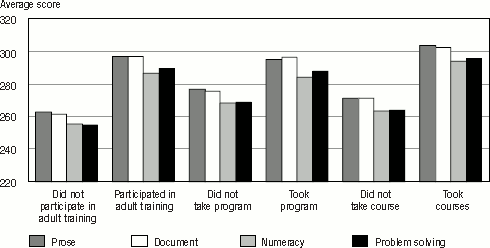
Figure 4.9
Source: International Adult Literacy and Skills Survey, 2003.
Figure 4.10
Source: International Adult Literacy and Skills Survey, 2003.
Adults can take part in a range of learning activities, some of which are relatively informal and take place outside the traditional education system. The IALSS measured participation in a variety of such activities, and distinguishes between those that are “ active” and those that are “passive”. Active modes of informal learning include, for example, going on guided tours, attending trade fairs and short lectures or seminars while passive modes include using video and tapes to learn, reading manuals and reference books and learning by trying things out (See Text Box D4).